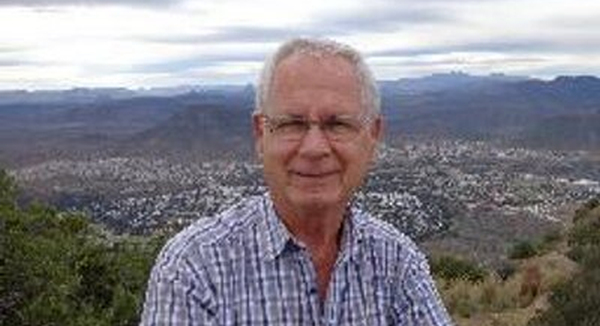
Part 5 (When does life begin) in a 7-part series on the issue of abortion by veteran lecturer, teacher and academic Dr Johann McFarlane.
See Part 1 Part 2 Part 3 Part 4 Part 6 Part 7
Ankerberg and Weldon1 (1:13+14) quotes Dr Bernard Nathanson, who was once known as the “abortion king”, having presided over more than 60 000 abortions. After seeing the power of new ultrasound technology, Nathanson completely changed his beliefs about abortion and became an active anti-abortion supporter. “He[Dr Nathanson] put it like this ‘X-rays were static. You couldn’t really use X-rays to prove or disprove much of anything about the fetus. But ultrasound gives us these very clear, precise pictures, allows us to stimulate the child, see how it breathes, see how it moves, see how it swallows, see how it urinates, see how everything happens.
A full version of this article is available free of copyright but with acknowledgement of the author, to those who send their names and e-mail addresses to me at johann@gcex.org
“Now there’s been a new advance in this ultrasound technology which is known as transvaginal sonography… -it’s valuable for very early pregnancies. We can see the gestational sac… We can see the heart beginning to beat at around 3 to 3 1/2 weeks now…I don’t doubt that there are new technologies coming even now” [+/-1988].
And new technologies did come! Nowadays technology provides 3D scans and also 4D scans that allow you to see movement clearly.
Now my question is to all involved in deciding when life starts: “Have you learnt anything from those investigating Galileo’ scientific proofs, who refused to look through his telescope? Have you looked through science’s ‘window into the womb’?”
However, while Dr Nathanson was convinced of the foetus having become a human being, it is clear that he would not have been able to observe the scientific changes with respect to the chromosomes.
Sidney Callahan, is an obstetrician and gynaecologist who has contributed to research projects relating to prenatal care, referring to herself as a pro-life feminist (4:132), but insisting that pro-life feminists fully agree with pro-choice feminists on the “moral right of women to the full social equality so far denied them”.
However, her thinking about the beginning of life agrees with that of Dr Nathanson about the benefits of technological advance to testify of the early days of the developments of the foetus: “While neonatology pushes the definition of viability ever earlier, ultrasound and fetology expand the concept of the patient in utero [in the uterus]. Within such a continuous growth process, it is hard to defend logically any demarcation point after conception as the point at which an immature form of human life is so different from the day before or the day after, that it can be morally or legally discounted as a nonperson. Even the moment of birth can differentiate a nine-month fetus from a newborn…Pro-life feminists reject the suppositions that would accept the unborn from this protection”.
Callahan (4:132) continues: “The handicapped, the retarded, and newborns are legally protected from deliberate harm. Pro-life feminists reject the suppositions that would accept the unborn from this protection.”
Callahan (4:136) confirms the ultimate, in my view, pro-life feminist and moral argument by saying: “Pitting women against their own offspring is not only morally offensive, it is psychologically and politically destructive. Women will never climb to equality and social empowerment over mounds of dead fetuses, numbering now in the millions.”
Du Toit (8:79) discusses all the arguments about when life does start [including their pros and cons] and then, with the authority and background of an experienced professor in ethics at the University of Stellenbosch and having consulted 123 references from around the globe, he finally comes to his conclusion which he spells out as follows [translated from Afrikaans]: ”When conception takes place, the sperm cell with its 23 chromosomes fuses with the ovum, likewise with its 23 chromosomes, in order to form a new centre with its 46 chromosomes. This new centre, the zygote, is a totally new entity with its total DNA and RNA of the new human being genetically determined. This implies that from the point of conception the zygote carries the confirmation of its unique and typical human individuality. The embryo is genetically complete with conception, irrespective of how small it is.”
All of these references confirm how complex the issue of abortion is, and how widely one has to consult in order to find the truth. However, the majority of the authors whose books I have read seems to implicitly assume that life starts at conception.
The recent case of a Cape Town pro-life doctor who faced a disciplinary hearing because of his view that an unborn baby is a human being, is close to a replica of Galileo and the church’s case. The role of the church has been taken over by the Health Professions Council of South Africa and Galileo’s by Dr de Vos. Asaph’s complaint to God in Psalm 83 (Amplified Bible) fits the current situation with respect to abortion well: “Keep not silence, o God; hold not Your peace or be still, O God. For behold, Your enemies are in tumult, and those who hate You have raised their heads. They lay crafty schemes against Your people and consult together against Your hidden and precious ones. They have said, Come and let us wipe them out as a nation…”.
The following letter to me from Dr Chris Warton of the University of Cape Town Medical School addresses the issue of personhood:
Hi Johann,
Human personhood is a matter, not of quantity but of an essential quality. One is either a person or one is not. We intuitively accept this. Who would suggest that a 3-month old baby is a long way from being human? Hartshorne implies that there is a long process of accumulating components of humanness before we can be seen as a person. This raises enormous ethical (not to say theological) issues. Who is to decide when we have enough characteristics to be human? And if we accept this idea. can we start losing our humanness later in life? Is a mentally handicapped or brain damaged person less human than a healthy person?
As I argued in my talk, the moment we start to think of humanness as a matter of degree we have opened the door to justifying every possible human evil. I suspect few slave owners would have seen their slaves as totally non human – but the idea that “they are not entitled to the same respect as I am” meant that they could be treated as animals. I do understand that there is much more to being a living, functioning, thinking adult person than just having a set of chromosomes but there is only one point where my life as a human person can be seen to have started. A human life is a long seamless continuum of changes but it is a human life all the way through. Embryonic development helps us to see that human life starts early but the primary issue is not scientific. From the moment my life began as a human organism my trajectory as a person was set. For those who deny this I would suggest “if you want to kill the organism/embryo/foetus/baby/small child the onus is on you to show that you are not killing someone”.







WITH all due respect I dont think you are considering the other side of the argument. It is a narrow minded view arguing when life starts. But there are so many other factors the pro lifers are not even thinking about.
I used to be very anti abortion, but now as I am older, more wise and Ive been working with pregnant females for over 20years my view has changed dramatically/
And you are a male, you have no idea whatsoever about the trials and tribulations of what pregnancy involves nor of its management
Thank you for reading this